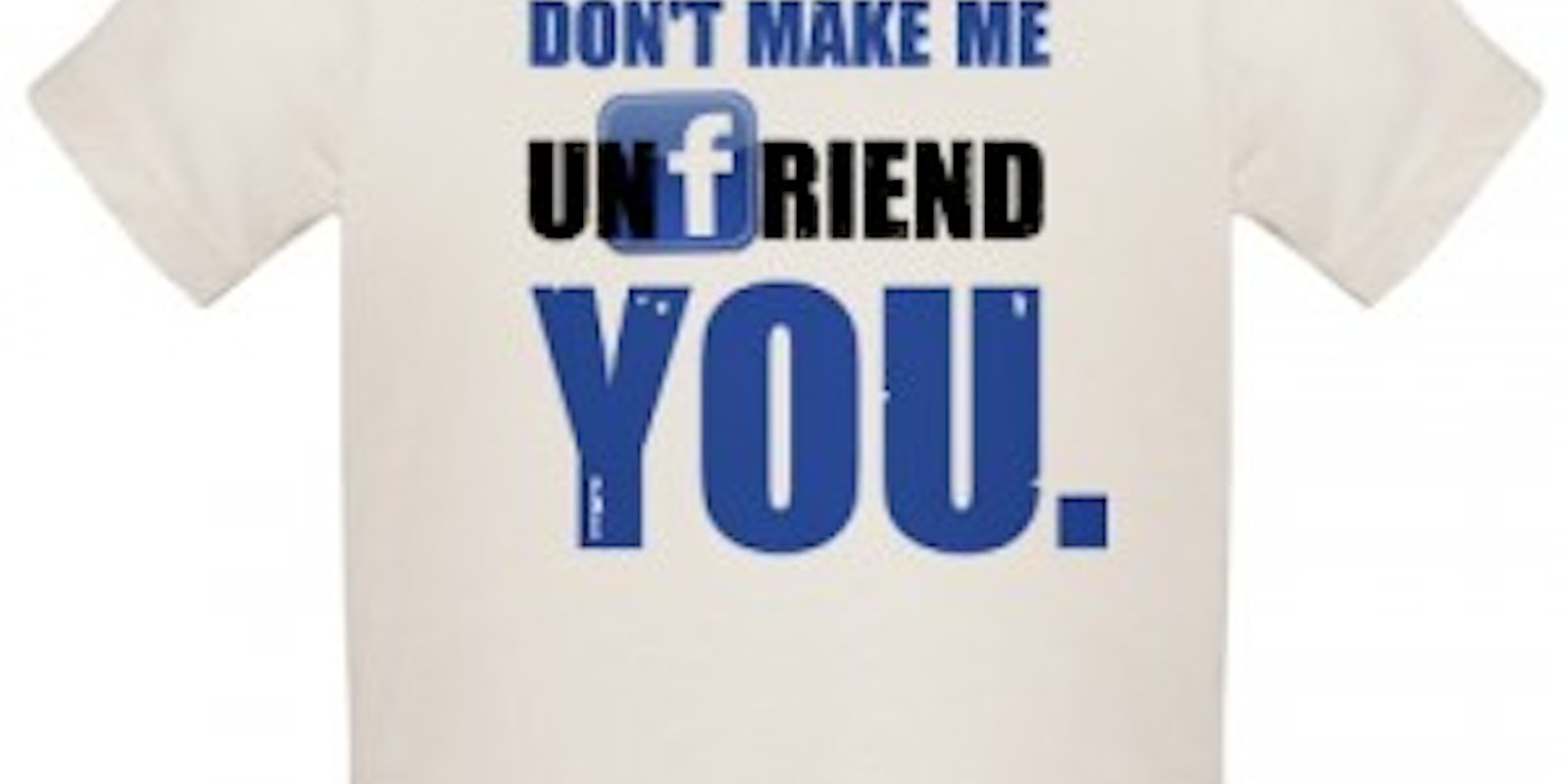What, aren’t you my friend anymore? Facebook’s ritual of friend requests has a corollary: You never want to be dropped, or defriended, by one of your online acquaintances.
So after Facebook users started freaking out over reports that it had suddenly become easier to find out who defriended you, Facebook developers moved quickly last week to fix the bug that allowed a small number of users testing a new feature to see ex-friends.
“Ahhh Facebook how quickly u change. Go back to de-friending in private!” Scott Thaler tweeted shortly after news broke that Facebook had disabled the feature.
Facebook has been testing a new “Timeline” design for its user profiles which will become available to all users Friday. One of the features of Timeline allowed you to quickly see when you had become friends with certain people. If a person in the list had “add as friend” next to their name, users would be able to tell they had been quietly rejected at some point.
It’s still possible for users to search individual friends they suspect of having removed them from a friends list, but Facebook users who didn’t gain early access to the Timeline design missed their opportunity to easily check for friends who had broken off contact.
“if you didn’t notice when they first left, were they ever your “friends” to begin with?” Daphne Desser asked in a Twitter post.
Facebook users have always been able to detect defriending by checking individual profiles of people with whom they were previously friends, but that’s a laborious method. Some third-party tools also promise to keep track of defriendings.
Facebook’s changes have gotten mixed reviews from users since being announced Thursday. Another hot rumor: That Facebook will start charging for the new Timeline feature. Unlike the defriending feature, that one’s just not true.


